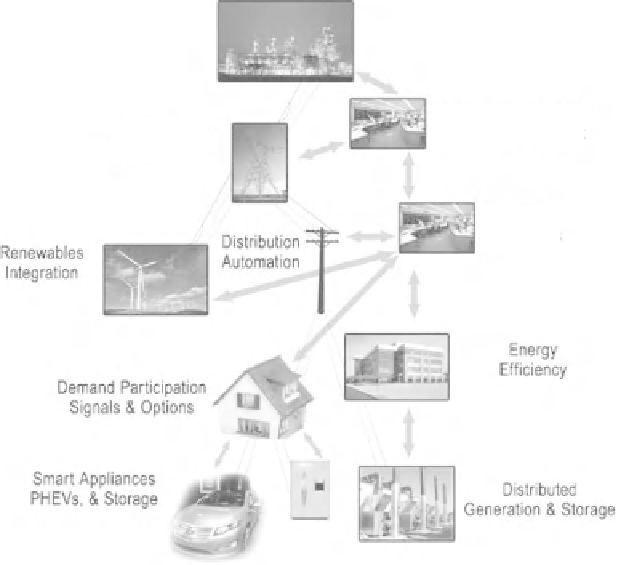Environmental Engineering Reference
In-Depth Information
System Coordination
Situation Assessment
Transmission
Automation
System
Operations
Distribution
Automation
Renewables
Integration
Energy
Efficiency
Demand Participation
Signals & Options
Smart Appliances
PHEVs, & Storage
Distributed
Generation & Storage
Figure 1.47
Scope of smart-grid concerns.
Source:
DOE 2009b Smart Grid System Report
technological progress is related to the smart grid, change is expected to be incremental
rather than transformational.
Information networks and finance: Information technology and pervasive communications
are the cornerstones of a smart grid. Though the requirements (capabilities and performance)
on the information networks will be different in different areas, their attributes tend to
transcend application areas. Examples include interoperability and the ease of integration of
automation components as well as cyber-security concerns. Information technology-related
standards, methodologies, and tools also fall into this area. In addition, the economic and
investment environment for procuring smart grid-related technology is an important part of
the discussion concerning implementation progress.
Arguably, the integration of renewable and distributed energy sources, energy storage and
demand-side resources into smart grids is the largest “new frontier” for smart grid advance-
ments (DOE 2009b). Control and power electronics are two key enabling technologies for
this. Power electronics is a part of the grid, and control is where “smart” is found (Ekanayake
et al
. 2012; Hopkins and Safiuddin 2010). Together with the power systems infrastructure,
they form the backbone of smart grids.
This topic is devoted to smart grid integration. For other aspects of smart grids, see e.g.
(DOE 2009a 2009b; Ekanayake
et al
. 2012; Farhangi 2010; Momoh 2012).



Search WWH ::

Custom Search